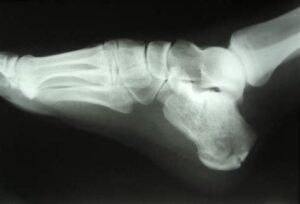Best Shoes After Calcaneal Fracture: A Comprehensive Guide
A calcaneal fracture—a painful injury affecting the heel bone—can be life-altering. Finding the right footwear during recovery is crucial for comfort, healing, and gradually returning to normal activities. This guide explores the best shoes after calcaneal fracture to help you navigate this challenging recovery journey.
Understanding Calcaneal Fractures
Calcaneal fractures typically result from high-impact situations such as falls or car accidents. These fractures can be potentially disabling and often cause persistent heel pain that may take months to heal properly. Common symptoms include:
-
Bruising around the heel area
-
Significant swelling
-
Difficulty or inability to walk or bear weight on the affected foot
Recovery from a calcaneal fracture is a lengthy process, often taking up to 12 months with the possibility of long-term complications.
Best Shoes After Calcaneal Fracture
Skechers Max Cushioning Elite
The Skechers Max Cushioning Elite provides exceptional cushioning in the sole, which helps absorb vibration and impact while walking1. This is particularly important as the healing bone might remain sensitive for months after the fracture, causing occasional discomfort or “twangs” during movement1. The super spongy cushioning makes these shoes ideal for day-to-day comfort during recovery.
ASICS Gel Cumulus 25
The ASICS Gel Cumulus 25 features FF blast cushioning, a high-density yet lightweight foam that effectively absorbs impact similar to the Skechers but in a much lighter package1. This shoe offers more responsive cushioning, making it an excellent choice for those looking to gradually return to more active pursuits like running. The responsive nature provides better feedback and push-through, supporting your transition back to sports after recovery.
HOKA Bondi 8
The HOKA Bondi 8 is renowned for its maximum cushioning, making it one of the best shoes for heel pain and recovery from calcaneal fractures2. These shoes provide excellent shock absorption and support, helping to reduce strain on the healing heel bone.
New Balance 990v6
The New Balance 990v6 offers a perfect balance of cushioning and stability, making it ideal for post-fracture recovery. These shoes are available in multiple widths, accommodating any swelling or discomfort that might persist during healing.
HOKA Speedgoat (Wide/2E Version)
For those who need extra width, the HOKA Speedgoat in wide or 2E width provides ample room while maintaining excellent cushioning3. These shoes have similar cushioning to Altra Olympus but with a higher heel-to-toe drop, which can be gentler on the Achilles tendon during recovery.
Key Features to Look for in Post-Fracture Footwear
When selecting shoes after a calcaneal fracture, prioritize these essential features:
Adequate Cushioning
Proper cushioning helps absorb shock and reduce pressure on the healing heel bone. Look for shoes with thick, responsive midsoles that can minimize impact during walking.
Appropriate Support
Good arch support is crucial for proper weight distribution across the foot, reducing strain on the heel. This support helps align your feet to their natural position and evenly distributes weight, which can reduce the pulling of the plantar fascia—a common source of heel pain during recovery.
Wide Toe Box
A wide toe box allows for natural toe movement and reduces pressure on the foot. This is especially important if you’re experiencing any swelling or discomfort in the forefoot area during recovery.
Heel Stability
A firm heel counter provides stability and helps maintain proper foot alignment during the healing process. This feature is particularly important as you transition from walking boots to regular shoes.
Transitioning from Boot to Regular Shoes
It’s essential to transition slowly from a walking boot to normal shoes after a calcaneal fracture. This gradual process helps prevent reinjury and allows the foot to adapt to increased mobility and weight-bearing.
Many patients progress through several stages:
-
Cast or walking boot
-
Transitional boot
-
Supportive shoes with possible bracing
-
Regular supportive footwear
Robert’s Story: Finding Hope After a Shattered Heel
Robert, a 66-year-old construction manager and avid skier, experienced a severe Type 4 calcaneal fracture after a serious automobile accident. His heel bone was shattered into multiple pieces, leaving him unable to walk without pain.
After undergoing minimally invasive calcaneus fracture repair surgery, Robert followed a dedicated recovery plan that included transitioning from a cast to a boot, then to a brace, and finally to regular shoes. Throughout his recovery, he remained committed to physical therapy, working through painful moments to regain mobility.
“My objective going into surgery was to do what the doctor told me. I wanted to come out of this as close to 100% as possible,” Robert shared. His determination paid off—he eventually returned to the activities he loves, including golfing, skiing, and riding his motorcycle.
Robert’s success story highlights the importance of proper medical care, dedication to recovery, and appropriate footwear throughout the healing process.
Additional Recovery Support
Custom Orthotics
Custom orthotics can provide targeted support for your healing calcaneus. These inserts are designed to fit the contours of your feet and can be worn with various shoes to enhance comfort and support during recovery.
Strengthening Exercises
After spending weeks in a boot, muscle atrophy is common. Targeted exercises to strengthen the calves and foot muscles are essential for full recovery. Consult with your healthcare provider or physical therapist for appropriate exercises based on your healing progress.
Finding the best shoes after a calcaneal fracture is a crucial step in your recovery journey. With the right footwear providing adequate cushioning, support, and stability, you can navigate this challenging time with greater comfort and confidence as you work toward resuming your normal activities.

